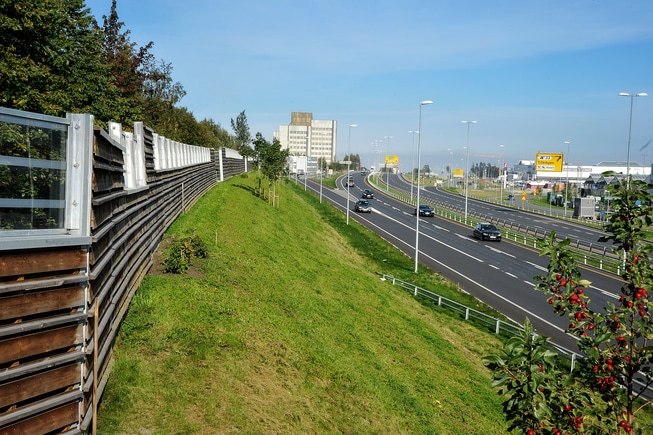Transportation
We travel more and farther. Norwegians now travel three times more and four times as far as we did in 1965.

Most importantly, we travel by car – in fact, the use of private cars has increased by more than five times in the past 40 years. This has catastrophic consequences for the environment, both locally and globally.
With mainly road and air traffic accounting for emissions, more than ¼ of the greenhouse gas emissions total in Norway stem from the transportation sector. But greenhouse gas emissions are not the only environmental problem traffic has to take the blame for. Air pollution in form of exhaust and particulate matter is not only a terrible environmental problem, but also a giant health problem. In addition to being the largest contributor to air pollution in major cities, road traffic occupy large areas due to its need for infrastructure. Building more highways destroys both important natural habitats and topsoil.
More roads = more emissions
Traffic increases when it becomes easier and faster to drive, research indicates. A report from the Norwegian Public Roads Administration in 2008 showed that construction of a four-lane road in Telemark and Aust-Agder will increase greenhouse gas emissions from the roads in the area with approximately 40 percent. Emissions growth is due to increased fuel consumption as speed increases, as well as growing motor vehicle traffic when driving becomes easier and faster.
Traffic growth contributes to increased emissions – restrictions are necessary
Thus we are in on the biggest problem in the transport sector, namely that traffic has increased steadily, with forecasts pointing in the same direction. To protect the environment it is important to work to ensure that transport demand is muted, including deliberate planning policies at the local level, to stop building new roads and runways, and taxation laws taking traffic’s environmental disadvantages into account.
At the same time it is important to facilitate people to be able to transport themselves as environmentally friendly as possible. Pedestrians and bicyclists must be prioritized, and public transport must be improved and become more efficient, particularly in and around the larger cities. Between the major cities, we need high-speed trains that make air travel redundant while simultaneously reducing the need for heavy road transport.
New technology is needed – but must be used sensibly
There is no doubt that new technology is important in reducing the transport sector’s environmental impact. But lowering emissions per vehicle has little effect if at the same traffic continues to grow. Therefore we need an even tougher policy instrument to reach our goals. New technology must be combined with measures to convert the travels by car and air planes to bikes and public transportation, while freight should to a greater extent be transported by train or with ships.
Our position
The society’s need for transportation must be reduced, made more energy efficient and less polluting. It requires a transition from private driving to more environmentally friendly forms of transport.
Public transport must be improved, it must be easier for cyclists and pedestrians to travel and it must be developed high-speed rail roads between the largest cities with heavy air traffic.
Means to reduce transport must also be adopted. Development of four-lane high ways only lead to increased motoring and increased emissions.
In addition, we need a boost in development of more environmentally friendly technologies such as energy-efficient engines, environmentally friendly fuel and zero-emission technology.
Contact: Holger Schlaupitz, hs@naturvernforbundet.no